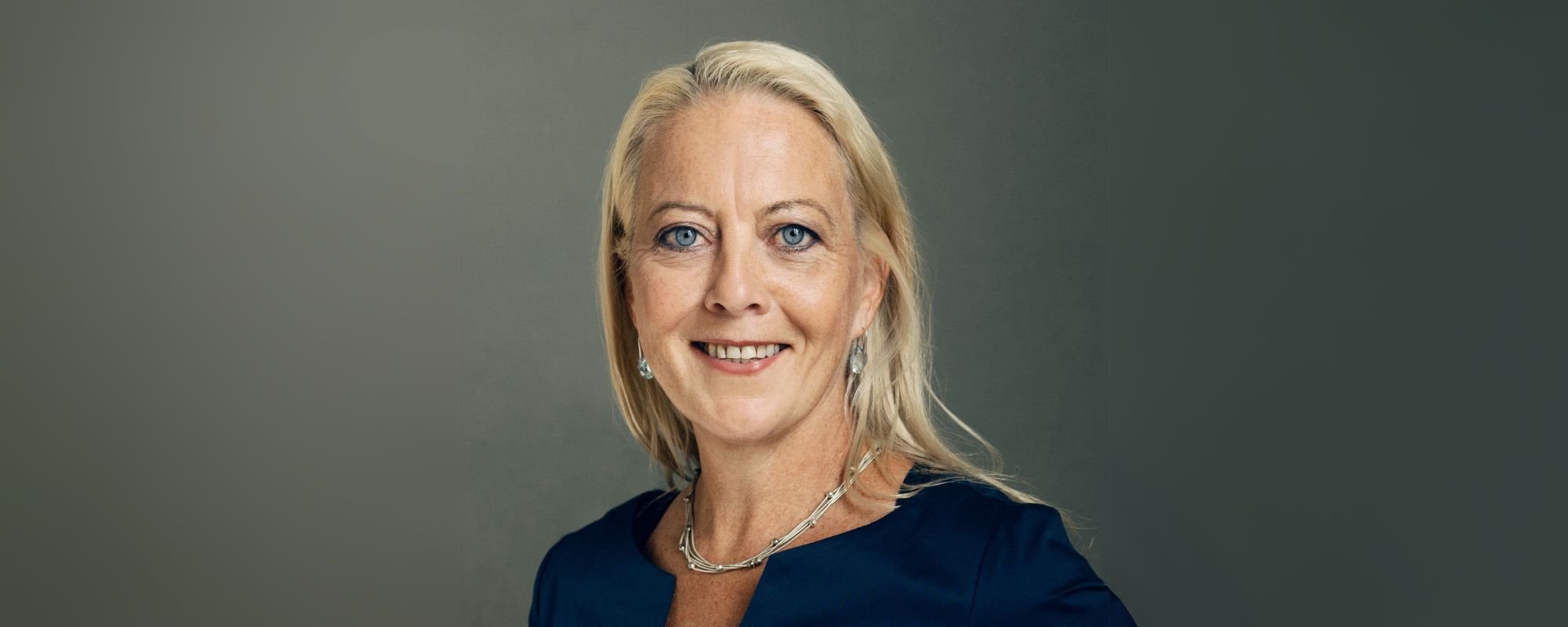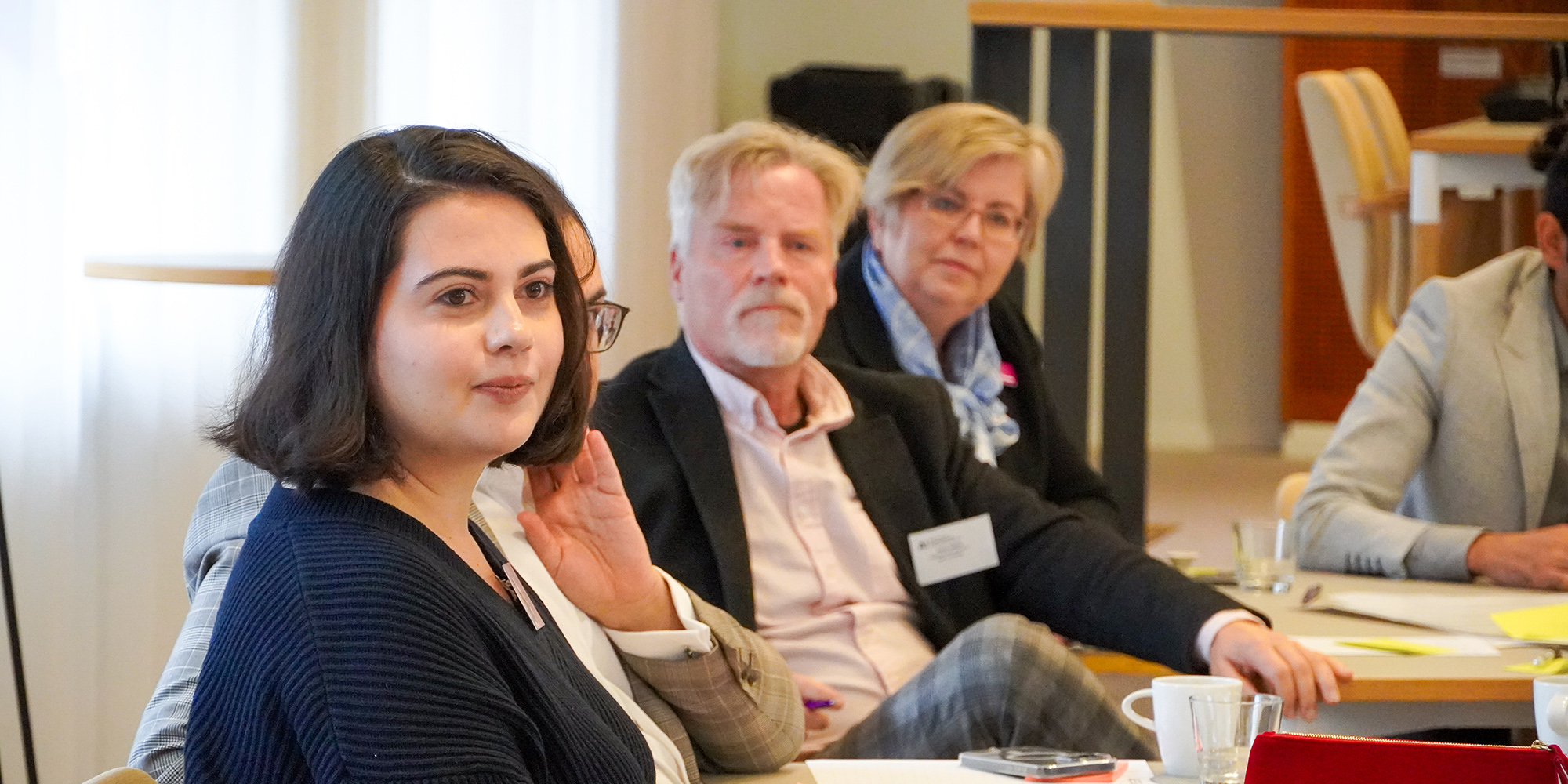The world of work is in a state of flux. The main drivers behind the turbulence are globalization, demographic change and – yes, you've guessed it – digitalization. However, the changing nature of work as such is nothing new, emphasizes Research Program Director Hertta Vuorenmaa from the Aalto University Future of Work program. As a matter of fact, work has never remained constant. The steam engine and other industrial innovations have, one after another, changed the way we work, think about work, and structure our work.
"Nonetheless, digitalization has brought on a more profound change, urging us to also alter the structures surrounding work. And therein lies the challenge," Vuorenmaa says.
Bringing in new technology is not enough; you also need to lead people through the change it entails."
According to her, we can no longer hold on to old leadership principles or focus solely on technology and the accelerating pace of change. Organizations need a deep, analytical understanding of what the change means in the context of their own organization and the various roles and responsibilities in it – and then figure out how best to manage it.
"What seems to be difficult in all kinds of organizations is the mindset or how we perceive work and the surrounding structures, such as where, when, and under what type of arrangement the work is done."
We need to rethink time
At the core of the mindset shift is the need to rethink everything, including time.
"Time is a structure that we have invented. It's not cast in stone," Vuorenmaa says.
She believes organizations should spend significantly more time thinking about what is sustainable in the long run. The reality is, that the actual work people do has already changed, while the structures surrounding it haven't. As an example, Vuorenmaa mentions youth social workers who are often contacted by their clients on WhatsApp, outside office hours.
"Communicating with these youths using new technology is an important part of their work, but in the eyes of the employer, this type of work is not recognized. These kinds of discrepancies are everywhere."
Another mindset challenge, according to Vuorenmaa, is that technology tends to stir up a lot of emotions. That's important for HR professionals to understand.
"This is one of the reasons why we still haven't seen the productivity leap we envisioned, despite the enormous potential technology offers. Bringing in new technology is not enough; you also need to lead people through the change it entails. Some are excited and quick to adapt, others ashamed because they can't operate the new tools. They go home and ask their teenage children for help."
Robots alone are not enough
The good old change management principles are still valid.
The most important thing for an HR professional to do, says Vuorenmaa, is to look at the situation through the eyes of the employees. This requires concrete, detailed data about the organization. The forerunners are those organizations that already have a strategic people management system in place: a clear strategy, a good grasp of the capabilities needed to implement that strategy, and a thorough understanding of the people management practices used in the organization.
"They don't have to start from scratch when they try to analyze whether their people management practices correspond to the changing situation."
The next step is a bit more difficult because it requires out-of-the-box thinking and breaking free from the institution's grip.
"At one training session, someone said that their job is to cannibalize their own job by discovering things that robots already do better."
HR professionals could be the ones that drive home the message that we still need people, too."
This all goes back to the mindset and the emotions technology evokes in us. Humans are prone to distrust decisions made by machines. According to Vuorenmaa, this reflects our basic attitude towards technology.
"I'm not saying it should be changed, only that it should be understood and that HR professionals could be the ones that drive home the message that we still need people, too. In our research, we have run into organizations that started thinking about these things 25 years ago. Consequently, they have managed to come this far without any actual layoffs. They have just had good job rotation programs and early retirement schemes in place instead."
From a people management perspective, Vuorenmaa says, the key is to understand how the organization and, in particular, the employees perceive the new situation, and to recognize the need to empower the employees to seize the change instead of it just happening to them.
"It's a balancing act, of course. Organizations strive for cost efficiency, and you can't hold everyone's hand trying to find out how they feel about the change. In forerunner organizations, this is done collectively. Knowing that you're not the only one whose world is changing brings security."
Institutions are slow to change
Work is a social institution, surrounded by a vast network of social and economic structures that also need to change. The change, however, is slow.
"Labor legislation, for example, used to provide support but now in many ways lags behind. It's meant to protect us, but does it really do that anymore?" Vuorenmaa ponders.
Another example Vuorenmaa mentions is daycare. Many parents these days work ever more irregular and atypical hours, but the daycare system hasn't adapted to this.
The change, then, is a domino effect, spreading everywhere and offering amazing possibilities for innovation, but organizations have yet to fully leverage it.
"It's the same old problem, resistance to change, with the added bonus of an exponentially more complex problem of having to change an enormous institution. It's a question of identity. After all, how do you answer if someone asks you who you are? You tell them what you do."
At the macro level, Vuorenmaa says, future of work and robotics researchers are not worried about the loss of income caused by robotization – most of them support the idea of universal basic income. What they are worried about is the loss of purpose and identity.
"If I were a top HR director, this is one of the things I would focus on."
It takes serious headwork
For an HR professional to succeed in this new world of work, a whole new set of skills and competencies is required. First and foremost is understanding the challenge in all its complexity. The keyword is headwork.
"You must be able to systematically analyze it in the context of your own organization instead of just relying on trends or buying into the hype. You must dedicate time to really think it through: what does it mean to us, how does it change the way we work. Or, if you don't have the time, then have someone else do it," Vuorenmaa says.
Other skills to hone include, for example, emotional intelligence, creativity, critical thinking, and complex problem-solving.
"This list is not coincidental. It includes things that humans can still do better than machines. Artificial intelligence is better at probability calculations, but you are the one who knows your people – or at least you should be."
From a people management perspective, this means that change is the new black. It will not go away."
Throughout human history, technological disruption has fundamentally changed the way we live and work.
"From a people management perspective, this means that change is the new black. It will not go away. The tools we're using now keep improving and developing, and hopefully we, too, become better at using them, adapt to them, and can finally move away from the fruitless utopia vs. dystopia discussion."
Instead of focusing on threats on one hand and fantastic business opportunities on the other, Vuorenmaa encourages us to think about adaptation. It requires hard work, factual knowledge and understanding, and critical thinking.
"People talk a lot about data-driven management and about artificial intelligence solving all our problems. I think it'll bring along a whole new set of huge problems. We can't rely on data and information as the ultimate solution. Just think, 2,000 years ago we 'knew' that the world is flat."
Vuorenmaa emphasizes that both information and science are by nature constantly evolving. It's simplistic to think that you'll get the answers you need just by entering your data into an AI-based system, for example.
"The challenges HR professionals are facing are ever more diverse. Whereas before a small decision you made might have impacted ten or maybe a hundred people around you, now, if you use AI to make digital people management decisions, they spread quickly and may affect thousands of people. Blind trust in data-driven management and decision-making poses a danger."
A shared responsibility
The pace of change is such that long-term predictions on the future of work – even on a five-year horizon – are impossible, says Vuorenmaa.
The World Economic Forum stated in its The Future of Jobs Report 2018, that "[c]atalysing positive outcomes and a future of good work for all will require bold leadership and an entrepreneurial spirit from businesses and governments, as well as an agile mindset of lifelong learning from employees."
"It's a shared responsibility," Vuorenmaa says. "We must actively think about how to go forward. What will we do in the future? What will our jobs look like? How will we manage them? I hope that what we'll see is a better working life for us all. That we'll succeed in rethinking work – as societies, organizations, and individuals. It's important to understand that we're all responsible for making this work. That's not to say, though, that there shouldn't be incentives for businesses and organizations to be actively involved in it."
Vuorenmaa believes that the value and importance of good people management skills will increase.
"It's becoming a make-or-break factor in the ever-tightening race for talent. Cultivating your company culture can make a huge impact on your recruiting efforts. It pays to pay attention to how your organization views people. Are they seen as a resource or as something more valuable than that?"
Hertta Vuorenmaa is teaching in Aalto EE's Executive HR Program, that aims to enhance the strategic skills of HR leaders and professionals. Learn more about Aalto EE's Human Resource Management programs.





















